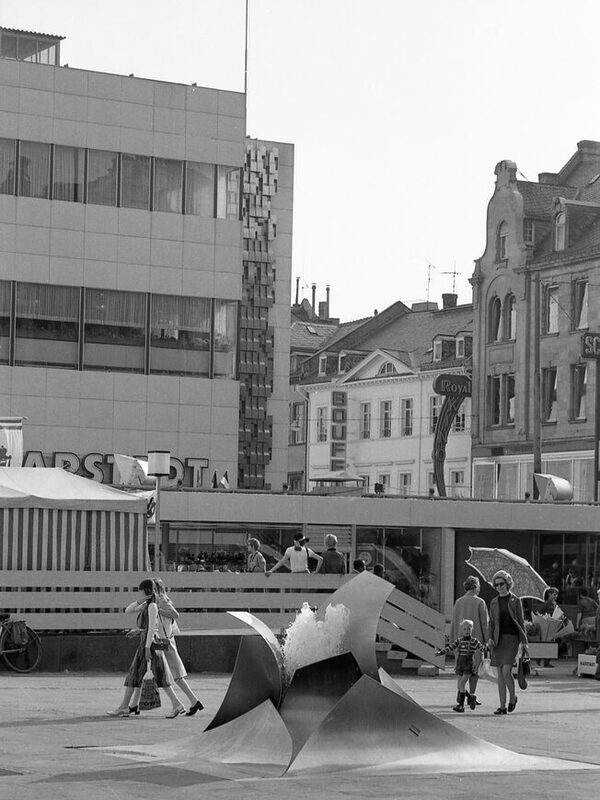Mauritius Square
The tradition of Mauritiusplatz dates back to Roman times. The oldest civilian settlement in Roman Wiesbaden was located here. This settlement, called "Aquae Mattiacae", extended around Mauritiusplatz between Friedrichstraße, Kranzplatz, Schwalbacher Straße and Mühlgasse. The "Schola", a merchants' meeting house, must have stood on or near Mauritiusplatz, as evidenced by the discovery of an inscription stone donated by the merchants in 212 AD not far from the square. This building probably formed the center of the civil community.
The Mauritius Church was built here in Carolingian times. The settlement's first cemetery was located around the church and was used until 1573. Until the 16th century, the part of today's Kirchgasse around the church was called "Bei der Kirche", later the "Kirchplatz". At this time, the square was not very large and rather funnel-shaped; it was surrounded by a wall until the 18th century. Next to the church on Schulgasse was the town school, with the vicarage on the other side. Opposite were town houses, some of which still had extensive courtyards and gardens. Behind the choir of the church, a staircase led to Neugasse.
After the Mauritius Church burned down in 1850, it was decided not to rebuild it on this site. By demolishing the school and other buildings, Mauritiusplatz was given a new rectangular shape as part of a new three-storey late Biedermeier development. This was replaced on the south side of Mauritiusplatz in 1904/05 by the Bormass department store, an Art Nouveau building. Little else of the older buildings has been preserved. In the decades following the Second World War, the condition of the square repeatedly gave rise to criticism; it was therefore redesigned several times.
At the end of the 1960s, Karstadt had the Karzentra department store, formerly Bormass, on Mauritiusplatz demolished and built a new department store complex at its current location on the other side of Schulgasse, for which the old fire station in Neugasse was also demolished. When the newly enlarged square was laid out in 1970, plans were made to create a pedestrian zone in Kirchgasse between Mauritiusstrasse and Marktstrasse. In the mid-1970s, Café Böck and a beer garden opened on Mauritiusplatz and remained there until 2001. A fountain sculpture was also erected and later replaced by a historic fountain. In 2004/5, the square was given its current appearance with a new fountain. Three steel plates set into the granite floor with incorporated bronze elements are reminiscent of the former Mauritius Church.
Literature
Czysz, Walter: Vom Römerbad zur Weltkurstadt, Geschichte der Wiesbadener heißen Quellen und Bäder, Wiesbaden 2000 (Schriften des Stadtarchivs Wiesbaden 7).
Sigrid Russ, editor, Denkmaltopographie Bundesrepublik Deutschland. Cultural monuments in Hesse. Wiesbaden I.1 - Historical pentagon. Ed.: State Office for Monument Preservation Hesse, Stuttgart 2005.
Schoppa, Helmut: Aquae Mattiacae. Wiesbadens römische und alamannisch-merowingische Vergangenheit, Wiesbaden 1974 (Geschichte der Stadt Wiesbaden Bd. 1).
Spielmann, Christian/Krake, Julius: Historical Atlas of the City of Wiesbaden. Twelve digitized city maps of Wiesbaden 1799-1910, edited by Thomas Weichel with the assistance of Rudolf Krämer, Wiesbaden 2002.
Wiesbadener Leben 1968/10 [p. 21].
Newspaper clippings collection Stadtarchiv Wiesbaden, "Mauritiusplatz".
